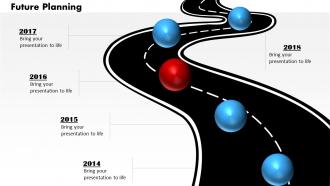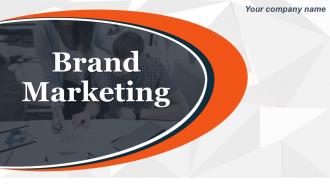It’s a warm summer evening. The year - 15,000BC. Far away in the caves of Lascaux (France), a primitive homo sapiens has just returned from his daily hunt. His mind in the zone: a creative zone. He lets his hands sway holding whatever colored stone or tool he has, and he paints and etches these murals of horned bulls and other such fauna; murals that will amaze archaeologists into thinking that the basic instinct of visual communication has been with us since time immemorial. Besides, these cave drawings are also a remarkable example of humans’ fascination with presentations.
Before we were clicking and typing away in our computer programs to make a colorful document, there were tools deep-rooted in a chapter of the history of presentations. Modern-day technology has made it possible to create stunning presentations and other visual content in PowerPoint, Google Slides, and Keynote; something that is a far cry from where it all began. In this blog, we trace the timeline of how we came around to making presentations and communicating business ideas and information with their help.
1. Cave paintings
The earliest evidence of human communication and projection of ideas can be traced back to prehistoric times in the form of cave paintings made by the early age humans in Lascaux. These spark the notion that the surface of the cave walls served as a huge slide to the human mind. The prehistoric man described what he may have seen in his surroundings and painted it onto this slide to bring the world’s first-ever presentation to life 20,000 years ago. Sure, he couldn’t write what he had in his mind for us to read, but he could do something even better. He projected what he had seen onto a surface, a concept that forms the basis of any modern-day PowerPoint presentation.
2. Hieroglyphs
Yes, we all went “Ooh” and “aah” when we first came across the drawings of Egyptian gods in the Hollywood classics The Mummy, The Mummy Returns, and The Scorpion King. If archaeological inspection has found anything while digging through the tombs of the revered rulers buried under the Egyptian tombs, it is that with the passage of time, reaching 3000BC, the human intellect had figured out how to use symbols to portray an actual story about those resting in the catacombs. This means that ancient Egyptians actually collected data about the emperors throughout their lives and then presented it to those visiting the tombs. As eyes spanned chamber after chamber, one could find ways to know the deceased through these hieroglyphs (or kill them if they were raised from the dead). Fascinating things lie under those pyramids, don’t they?
3. Bar chart
Transcending ahead to the mid-1300s, there was the advent of bar graphs or bar charts. Reportedly devised and represented in The Latitude of Forms, a bar chart projected a case of uniformly accelerated motion with the help of comparative bars. The classic bar chart quantified the qualities in a more decipherable manner that would give the audience more leverage in understanding the data quickly. With bar graphs, the human mind was able to extrapolate thoughts and data, a concept that modern-day infographics derive from.
4. Chalkboards and whiteboards
This will take all of us back to those old school days. But for some, the chalkboard or blackboard, and its fancy cousin, the whiteboard, emerged from the most rudimentary concepts of learning at school. In ancient times when classrooms had not come into being, students in early settlements used clay slabs as boards to write by etching them with a stylus (which evolved into the current pen or pencil).
In fact, later in the 1600s, teachers were piqued by the wonders a wooden slate and chalk can do for efficient learning. The result of that evolution became a much larger wooden slate hung against a wall and the use of chalk to write on it. Chalkboards thus became synonymous with the most economical way of giving presentations back then. The cheapness of wood and the utility of the duster or eraser made chalkboard a remarkable tool for teacher’s assistance. You could draw your mind to it and just erase it for the next chapter.
Later with the advent of marker ink and whiteboards, it became even more practical to project ideas and lessons without having to worry about coughing on the chalk dust. Thus, communication through whiteboards became a milestone in the history of presentations.
The modern-day presentations have whiteboards and chalkboards to thank for bringing in the need to develop flexible tools to manipulate and edit data in an adaptive manner.
5. Flip charts
Another means of communication whose origins can be traced back to classrooms are the paper flip charts. With printed posters fastened with metal clips, a flip chart enabled a teacher to present detailed information with diagrams. This was an improvement over the chalkboard usage as it eliminated the time lapse involved in copying the printed material onto a bigger surface. Textbooks were aligned according to the lecture content with each poster on the flip chart, which found several teaching applications in the medical courses.
In fact, so versatile were the flip charts that even businesses took notice and started using them to present ideas and pitch entrepreneurial avenues to investors. Slowly and steadily, the flip chart gave birth to poster cards. Businesses used all data and figures and presented them onto sequenced cardboard posters which the presenter went through one by one on a board affixed to a wooden or metallic stand. Soon, the presentations started becoming more refined and data-oriented than before. There was a tool with the presenter, and ideas just flew off the shelf with it.
Instinctively, this laid down the basic groundwork for the slideshows that we see in PowerPoint presentations today.
6. Projectors, filmstrip, and more
While technology and optical advancements kept on growing with the passage of time, it was not until the early 1800s that the first-ever projector was developed. Called by the name “the magic lantern”, it used a flaming candle to project transparencies onto a screen. A transparency was a thin transparent strip of paper or glass through which light can pass and the designs on the strip could be replicated onto a screen.
With the advent of electricity, the projector got modernized. Inventors started figuring out how the very first overhead projector could be used to effectively disseminate information in classroom or business meeting setups. Teachers, in fact, used overhead projectors with transparencies late into the 80s and even early 90s.
However, as the human tryst with knowledge and experimentation kept growing, so did the projector. The average business leveraged this to improve their meeting productivity and corporate communication strategy. With the camera and design technologies climbing new heights, soon the meeting room presentation started employing thin strips of negatives of written and organized information. These filmstrips were able to replicate the contents printed on the reel in the sequential form with each frame capturing each ‘slide’.
Consequently, the slide projector came into action in the 1950s. By this time, corporates had understood how visual content could lead to enhanced learning and information supply. A slide projector used specially designed slides that were prepared much before a meeting and then arranged onto the projector column that used a similar concept as the magic lantern. The only difference was that this time, the light source was powered by electricity. The presenter could present up to 80 slides on a specific topic. To enhance the functionality, however, the presenters also started using pre-recorded voiceovers that were played alongside the presentation for better dissemination of information. An outstanding and revolutionary example of this projector remains the Kodak Carousel Projector, which revolutionized the way lectures were delivered.
Then along came PowerPoint
A significant issue with the slide projectors was the amount of people and resources it went into preparing the slides. Not only that, while transparencies were cheaper than slides, these were not easy to make for an individual and needed a specialized designing resource at work. Moreover, lack of editing capacity and re-usability was also a key issue. A significant drawback was of the portability of the slides and the usual wear and tear and other glitches.
However, it was only due to these drawbacks that need arose for having presentation creating programs, which eventually catapulted the famous PowerPoint on the scene.
Launched in April of 1987, PowerPoint, initially named “Presenter”, was developed by Robert Gaskins and Dennis Austin while working at a Silicon Valley giant, Forethought Inc. The program was launched for Apple Macintosh primarily, and was pitched with its look and feel on the Microsoft Windows 1.0, which was yet to be released back then.
PowerPoint 1.0 was used for producing overhead transparencies in the Macintosh computer. It was only after Microsoft acquired PowerPoint for $14 million in July 1987 that its later versions were used for creating colorful slides that could be used in projectors. It was only after PowerPoint 3.0 was released for both Windows and Macintosh that it began picking up pace.
But before we delve into how PowerPoint became the unconquerable giant it is today, here are some fun facts that add to the run-up to its dominance.
- PowerPoint was Microsoft’s first significant acquisition in its days of competition with early Macintosh computer.
- Did you know that Bill Gates earlier had been for keeping PowerPoint as part of Microsoft Word and not as a separate application? In fact, the earliest versions of Office Suite did not even have PowerPoint as its part. It was only later in the early 1990s that it was sold as part of the Office bundle software.
- Within three years of its launch and acquisition by Microsoft, PowerPoint reported poor sales. It was only after launch of later versions of Windows after 1991 that the sales picked up and PowerPoint grabbed more than half the market share of computer graphic presentation creation software.
How PowerPoint made a difference
At the time of its inception and distribution, PowerPoint had brought together a revolution in the field of presentation in day-to-day official communication. Besides its application with a projector, there were several reasons why the software gathered much traction:
- PowerPoint enabled teachers, businessmen, entrepreneurs and other presenters to create slides at their own discretion and ability instead of waiting for a design vertical to do it for them.
- With each successive version, PowerPoint got more flexibility, intuition, and robustness. Not only could one represent facts and figures, but also could process data with bar graphs, pie charts, funnels, line graphs, and much more.
- Coupled with a portable computer and projector, one could present an entire business pitch deck like this to a group of audience in a meeting.
- It alleviated the pain points that presenters faced regarding portability and distribution. The slides could be printed on paper and even distributed with linked files on a CD-ROM. With the development of data storage technologies, it became even more portable and usable.
- PowerPoint’s linkage with Office Suite apps like Word and Excel added to its popularity. One could just input figures into the excel sheet of each PowerPoint file and then simply choose an infographic to represent that information.
- With each successive version, Microsoft kept improving upon its original concept of “slide master” (or templates as we call them) with additional design variants and more readymade slides to give users a head start in making an eye-catching presentation.
- PowerPoint also enabled users to embed a presentation into a webpage or a blog, or run it as a slideshow, or simply record it as a video.
- The latest version of PowerPoint is capable of churning out stunning animations, audio-visuals, infographics coupled with video insertion as well.
PowerPoint gave the user everything they needed to make eye-catching content. But the term “Death by PowerPoint” also stayed with it persistently. Then again, the point remained that it depended on the presenter to use it precisely and use it better. In fact, a classic example of impressing the audience right off the bat was this pitch deck by dating app Tinder. The focus remained on captivating the audience with an interesting pain point and giving the solution immediately. More needs to be seen on how human instinct for presenting and communicating information enables better and smarter usage of PowerPoint.
What the future holds
Technology is never a bowl of water kept on a table. It is an ever-flowing river of faster and better things. With each wave of genius that methods of presentations have borne, the role of virtual reality and artificial intelligence has become even more prominent. In fact, Microsoft has teased how it plans to use artificial intelligence to make its Office Suite products including PowerPoint more efficient and user-friendly. With time, the tech giant has also forayed into Android and web applications, taking PowerPoint to the user’s fingertips.
While more and more web tools are also coming up (Google Slides, Prezi), the basic concept behind presentations remains efficient communication of ideas. It only remains to be seen how the man who etched murals in Lascaux will keep captivating the minds of his audience with ideas and information in the years to come.





 Customer Reviews
Customer Reviews



















